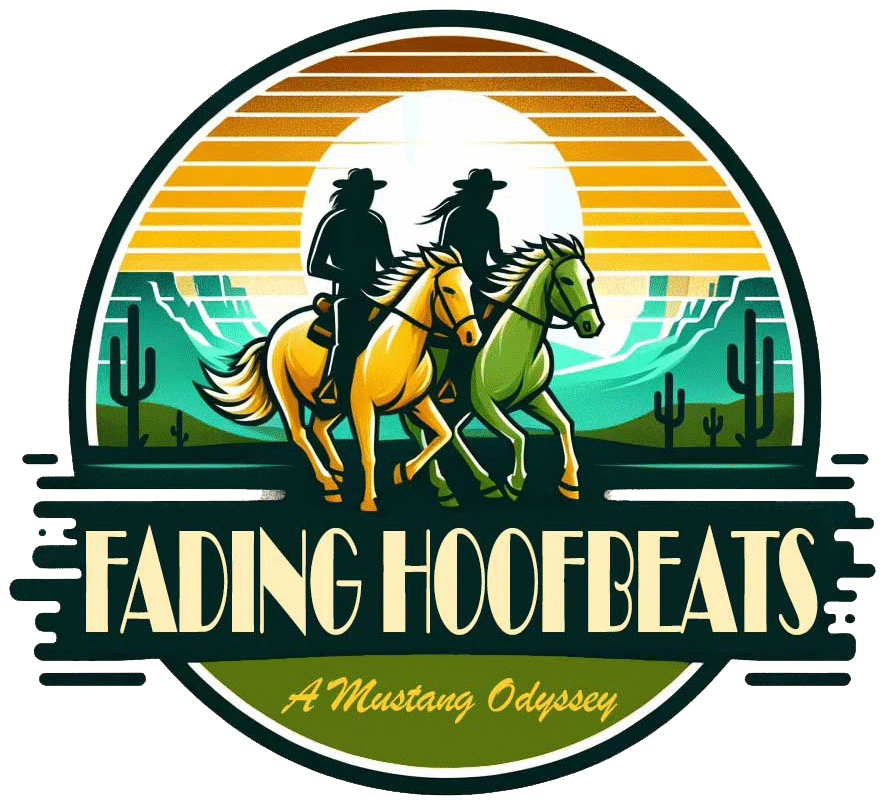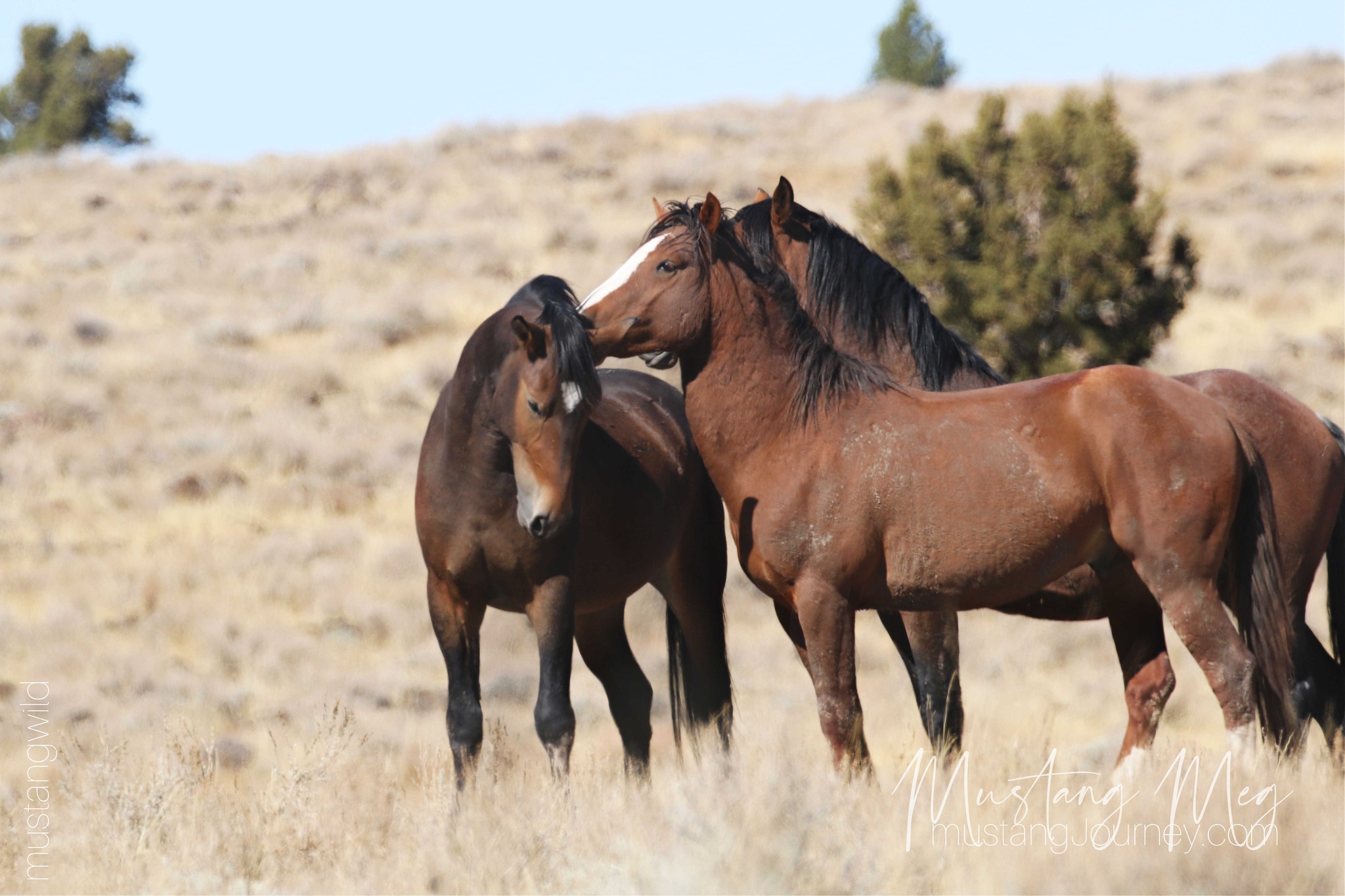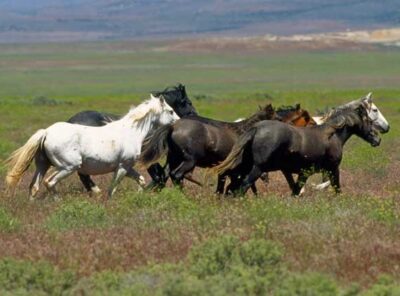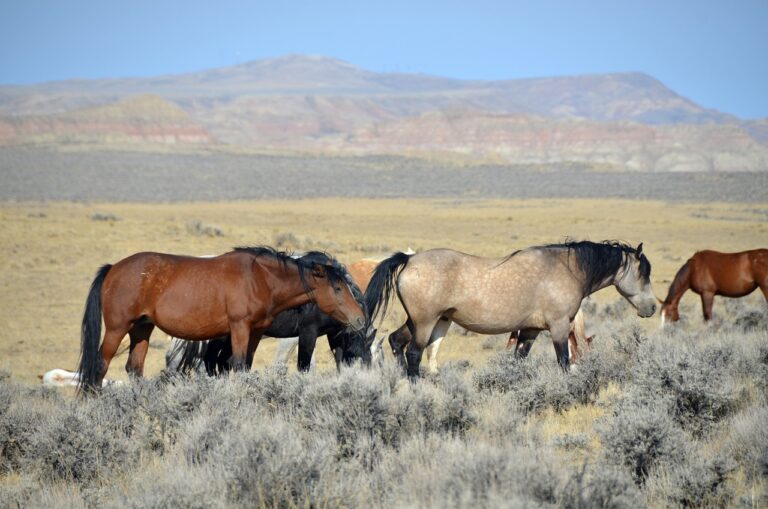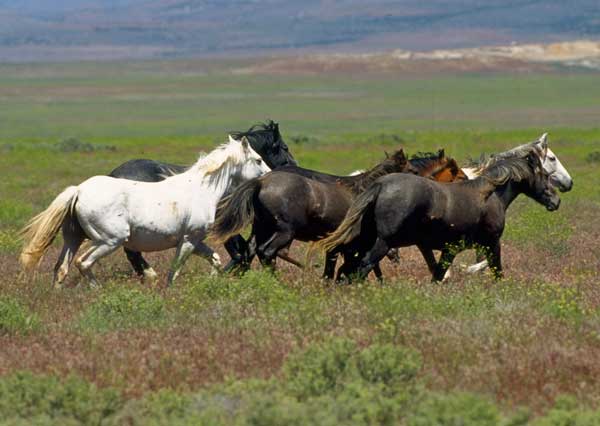Oregon — Lineage, Color, and Roads You Can Actually Drive
Oregon has some of the most talked about wild horses in the West. It sits at a rare crossroads: historic Spanish type influence in the Kiger and Riddle Mountain herds, photogenic color bands on South Steens, and hardy basin horses shaped by wind, rimrock, and long distances. If you plan ahead and keep a safe distance, you can often see bands from roadside pull offs instead of long, remote hikes.
This guide pulls together what is known about bloodlines in key HMAs, what kinds of colors you might see, and what the ground and roads are like. If you are new to wild horses, this is a fine place to learn without getting lost. Good roads, broad sightlines, and active volunteer groups make it easier to match your plans to your rig, your timing, and your comfort level.
We write as visitors who try to travel slow and pay attention. The goal is simple: help you meet wild horses without stress and help you plan trips that feel safe for you and your horses. Conditions change over time, from herd make up to access points, so use this as a starting point and pair it with current maps, local contacts, and your own judgment on the ground.
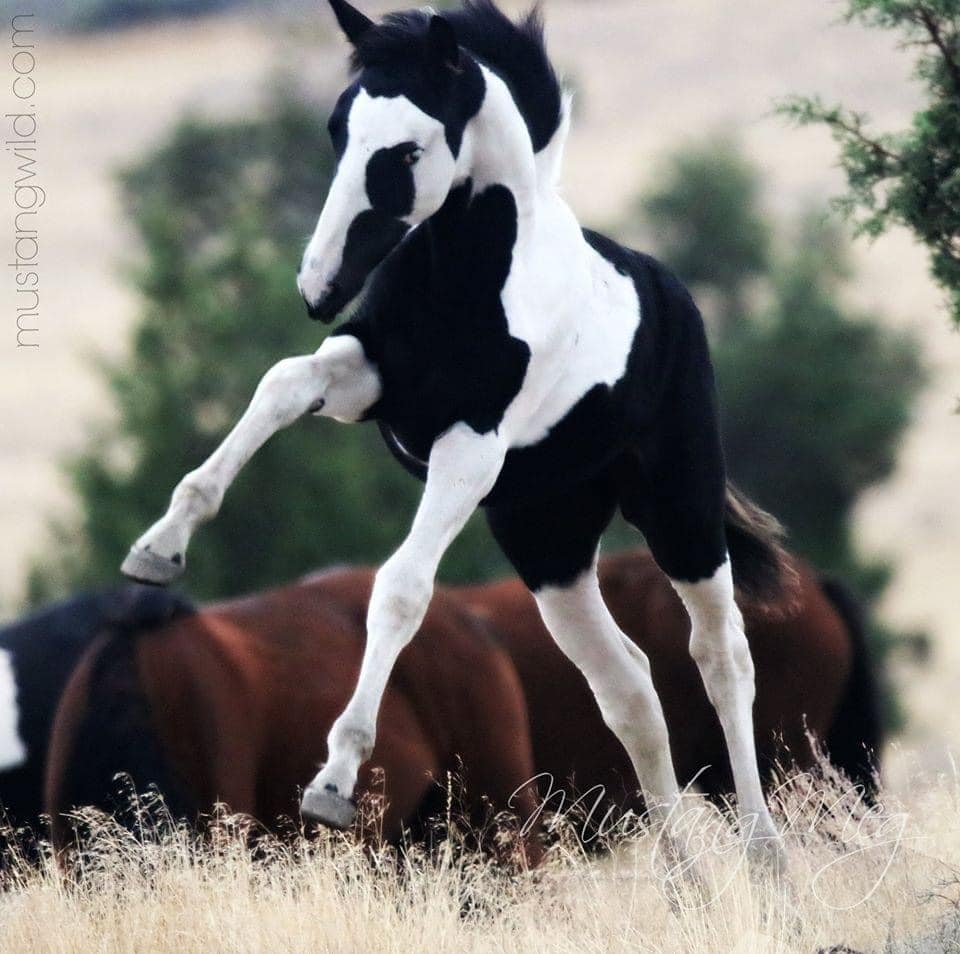
At a glance
Why adopt from Oregon HMAs
Oregon is a good place to look if you want choices. The state has 17 BLM herd management areas plus the co-managed Murderer’s Creek Wild Horse Territory, and they cover almost every kind of country you can imagine, from high desert to timbered forest. You will find tall South Steens pintos, compact Kiger duns with Spanish type, heavier muscled Warm Springs saddle horses, and desert horses from places like Beaty Butte and Paisley Desert that grow up traveling long distances for water.
If you care more about a solid working partner than a rare color, Oregon is rich ground. Many of these herds have a mix of ranch, remount and saddle stock in their background, with a few that lean toward light draft, gaited or Iberian type. You can look for a specific “type” or just let the right horse find you.
Kiger & Riddle Mountain — The Paired Herds

Story. Kiger Mustangs are known for concentrated Iberian type traits: dorsal stripe, leg barring, leggy, agile builds, and a strong, uphill look. BLM manages Kiger and Riddle Mountain together to preserve that look and protect genetic diversity. Periodically, managers move a few horses between the two. Adoption demand runs high; many Kigers place quickly and auction prices can soar.
The modern story started with a 1970s gather when a small group of horses stood out from the rest. Their dun shades, primitive stripes, and similar build caught enough attention that they were set aside and later tested. Those tests pointed back to old Spanish type horses, so BLM placed related bands in two separate herd areas on Steens Mountain: Kiger and Riddle Mountain. Since then, the goal has been to keep that type visible on the range without letting the herd get too inbred or too large for the country.
For visitors, that means a small, carefully managed population that does not always read as “flashy” from a distance but often rewards a closer look. Many horses are dun or grulla with clear primitive markings, and some carry a softer, more ranchy look from later influences. On a good day you might see a classic Kiger type with a dark face and primitive markings (aka zebra stripes) on the legs, moving across open rimrock with a tight family band behind him.
What to look for
- Colors/markings: duns and grullas; dorsal stripe, shoulder bars, cobwebbing on the forehead
- Type: quick-footed, compact, sure-footed over rimrock
Visiting notes
- Approach from the Burns District. Gravel can turn to washboard—air down a little if you know how.
- Glass first (binoculars/long lens) before you walk out; bands settle if you move slow and stay downwind.
Photo cue (alt text): “Grulla Kiger mare and yearling on a rimrock bench; bold dorsal stripe under high clouds.”
Credit format: Photo: [Name] (used with permission)
South Steens — Color and Access
Story. South Steens draws visitors because you can drive through big country and still find horses: pintos, bays, roans, and buckskins along the South Loop Road, moving through juniper breaks, gulches, and September light that makes coats glow. Much of my information here comes from reading Mustang Meg’s field notes and posts; she knows South Steens deeply. I recommend following Mustang Meg on Facebook, her YouTube channel Mustang Journey, and checking out her wild horse art and products at wildhorsespirit.com. Her main website Mustang Wild is currently offline while it is upgraded, but please check back later.
A few well-known South Steens stars

Shaman. A blue-eyed Medicine Hat stallion and a South Steens legend. Many people meet the mountain through his story: calm, watchful, charismatic on open range.
Voodoo. Band stallion of the famous “all-black band.” His lead mare is Raven, and field notes often track the pair and their dark-coated offspring with “spooky” names. After a gather, reports said Voodoo was released back to the range; searches focus on his usual home ground. Personal note: both my mustangs are black, so they’d fit right in with Voodoo’s band. That makes this family my favorite on the Steens.
Raven. Voodoo’s black lead mare, often photographed deep in the backcountry with her stallion. She anchors the look and feel of the all-black family that drew so many visitors. Offspring recorded over the years include Black Magic, Juju, Mojo, and Jinx; some posts also mention Rain Dancer. Mojo has been seen running a band of his own.
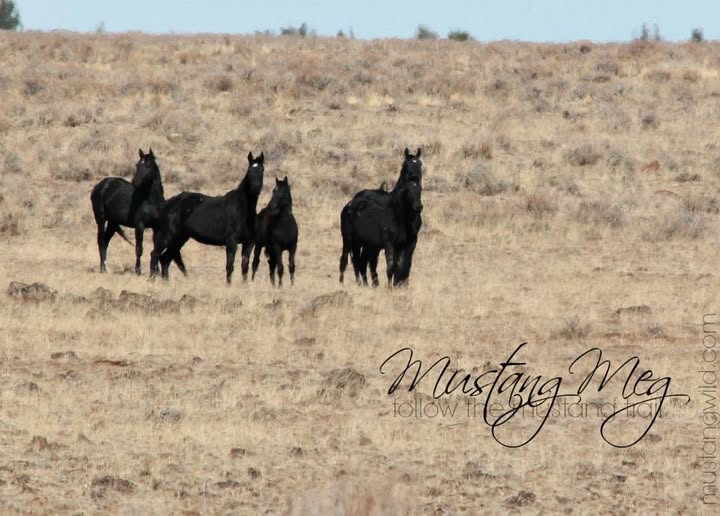
Kamali. An older mare with a steady presence. Meg has written about how Cavalier watched over her and waited for her—an example of how stallions protect and pace their families. Kamali shows up across years of field notes in the range’s long family stories.
Long-time mare–stallion pairs on South Steens
Stable pairs shape band identity and how foals grow up on the mountain. Voodoo & Raven are the clearest example: season after season their tight bond, matched color, and line of dark foals gave the band its signature look. Other pairs with that same long arc include Sox & Chenoa, Atlas & Hera, and Cavalier & Kamali.
These bonds matter. When a pair stays together, the band’s travel routes, water habits, and foal training stay consistent. You can read it in posture and spacing: stallions that shadow their mares without crowding, mares that step out first to check a draw, foals that mirror the calm. That rhythm is the heartbeat of South Steens.
What to look for
- Color variety and family dynamics—watch stallion posture and how mares shield foals
Why adopt from South Steens
South Steens horses tend to run a little taller, with many in the 15 to 16 hand range and good, sturdy bone. The herd is managed for pintos with above-average conformation, but you will also see buckskin, bay, palomino, sorrel, gray, brown and black.
If you like a big, forward horse that looks like it belongs in a classic range photo, South Steens is a good place to look. These horses grow up on open country with real weather and real distance between water and feed, which often shows up later as a strong walk and a practical trail brain.
Visiting notes
- Most horses are found along the South Loop Road side of Steens rather than up in the higher aspen groves on the north side
- Steens Mountain Loop can open late and close early with weather; bentonite turns slick with a single storm
- Best light: early and late, when dust hangs like gold and bands drift to water—watch weather so you don’t get caught overnight
Beaty Butte & Paisley Desert — Basin Stamina
Story. Farther east, bands show what wind makes: efficient frames, big walk, no drama. Expect bays, sorrels, duns, and the occasional gaited mover.
Visiting notes
- Fewer facilities, longer distances. Tell someone your route, carry extra water, and bring a real spare.
- Expect long glassing sessions. If you can’t see horses, watch the ravens’ flight—they often trace the same drainages you’re trying to find.
Palomino Butte, Hog Creek, Three Fingers — The “Show Me the Hoof” Loop
Story. Easy to underrate until a 15-hand palomino with a calm eye walks out of the sage. These ranges often produce solid, adoptable trail horses with practical feet.
Visiting notes
- Check seasonal road conditions. Good day trips if you’re based near Burns or Vale.
- Respect gates and stay off two-tracks after rain—rutting a road can close it for a season.
Photo cue: “Golden palomino stallion standing square in short sage; storm shelf building to the west.”
Warm Springs, Sheepshead/Heath Creek, Coyote Lake–Alvord — Big Country, Big Glass
Story. These HMAs form what is called the Barren Complex along the east side of Steens Mountain. They reward patience: long lenses, a tripod if you have it, and time. Expect hardy builds and bands that drift wide.
Visiting notes
- The Alvord side can feel alien—pack layers; winds shift fast.
- Carry a paper map; reception fades exactly when you think you need it.
Why adopt from Warm Springs or Sheepshead/Heath Creek
Sheepshead/Heath Creek horses are classic saddle stock. Most stand around 14.3 to 15.3 hands and weigh about 950 to 1,150 pounds, with a few stallions that run a bit bigger. Conformation leans toward quarter horse and Thoroughbred type, and genetics show a blend of North American gaited breeds, light racing and riding breeds, and Old World Iberian lines.
If you want an athletic, medium-sized horse that looks ready to go to work, this herd is worth watching. Horses that grow up in this kind of high desert country often have a good walk, a practical mind and enough bone to carry a real job without feeling heavy or drafty.
Ethics You Can Keep in Your Pocket
- Let the horses set the comfort bubble; if a head pops, you’re close enough
- No calling, herding, or feeding
- Use long lenses; stay on existing roads; step soft around water
- In mud season, turning around is stewardship, not defeat
Contribute & Credit
Have Oregon photos or field notes to share? Comment or email with:
- Photographer name (as you want it displayed)
- Permission line: “used with permission”
- (Optional) a one-line caption or foal/year band details
More Resources: Visit the BLM Oregon/Washington wild horse pages for maps of Herd Management Areas (HMAs), adoption updates, and management details straight from the Bureau of Land Management.
HMA vs. HA vs. WHT — What’s the Difference?
HMA stands for Herd Management Area. These are the official public lands designated for managed, protected wild horse herds under the 1971 Wild Free-Roaming Horses and Burros Act.
HA stands for Herd Area. These are places where wild horses have used or moved into the land outside the legal HMA boundaries. They are not managed as official wild horse range.
WHT means Wild Horse Territory and is managed by the U.S. Forest Service (USFS).
Most Oregon herds are BLM HMAs, but Murderer’s Creek is a special case: it’s co-managed by the Malheur National Forest (USFS) and BLM Prineville District.
We update this page. Send factual corrections with a source (BLM/USFS page, map, or local group post), and we’ll log it in the changelog.
Read the State Guides
These guides are coming online one by one. If a title doesn’t have a link yet, it just means I’m still writing it—check back soon.
- Start here: Fading Hoofbeats overview
- Oregon’s Wild Horses: Where to See Them and How to Watch Respectfully (You are here.)
- California — Devil’s Garden, McGavin Peak & places you can actually ride
- Wyoming — Red Desert, Adobe Town & Great Divide
- Colorado — Sand Wash Basin & Piceance Basin
- Nevada — Onaqui, Pine Nut & more
- Arizona & New Mexico — Heber, Salt River & borderlands
- Special: Theodore Roosevelt National Park (North Dakota)
- Special: Assateague Island (Maryland/Virginia)
Photo Credit: Images in this post © Mustang Meg, used with permission. You can see more of her wild horse photography and support her work through:
- Facebook: mustangmeg.com
- YouTube: Mustang Journey (mustangjourney.com)
- Art and merchandise: wildhorsespirit.com
Last checked: November 13, 2025.
